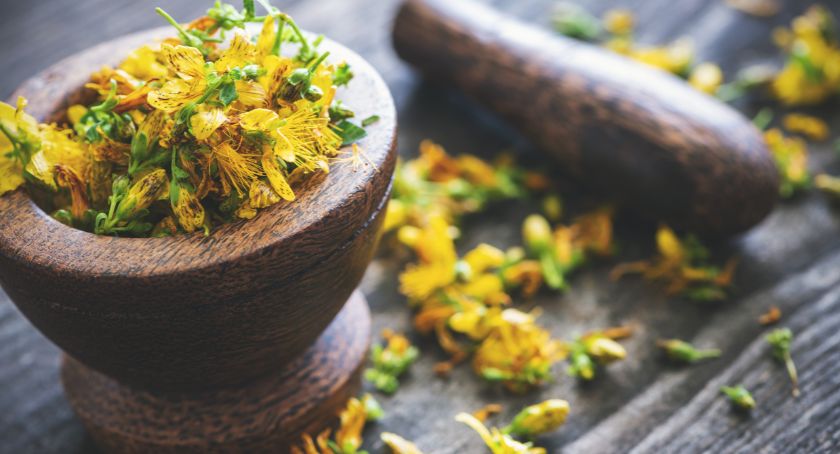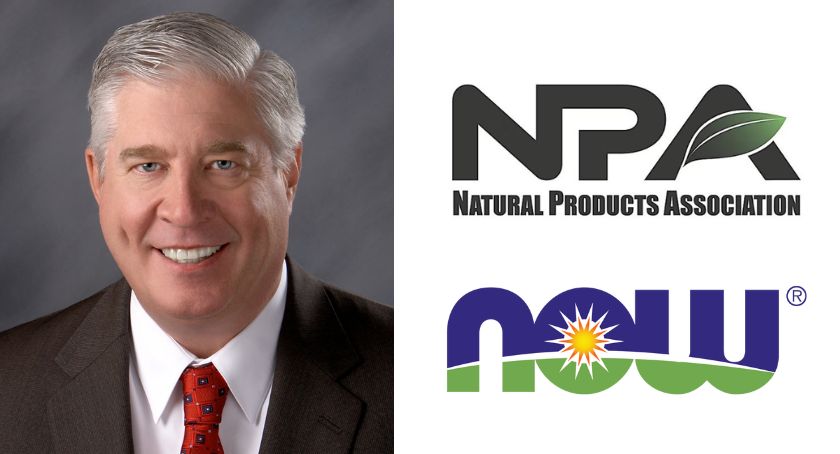Exclusives
Astaxanthin Benefits: Why it’s Considered An Antioxidant Powerhouse
Natural astaxanthin from microalgae supports a range of health applications.

By: Sean Moloughney
This article was updated on August 22, 2021.
Grown in fresh water, Haematococcus pluvialis is nature’s most abundant source of natural astaxanthin—an antioxidant powerhouse that’s gaining prominence as a nutritional ingredient. Emerging research has validated the vibrant red carotenoid’s ability to quench free radicals and reduce oxidative stress, correlating to benefits for cardiovascular health, sports nutrition and recovery, skin and joint health, and more.
According to the Natural Algae Astaxanthin Association (NAXA), natural algae astaxanthin is almost exclusively used in human food and dietary supplements, while synthetic astaxanthin is mostly utilized in aquaculture.
Research and Markets valued the global astaxanthin market at $647 million in 2021 and projected it will reach $965 million by 2026 on a CAGR of 8.3%. With increasing awareness among consumers, the market for functional and fortified foods is growing, with consumers preferring balanced diets and food that satisfy hunger and benefit health. Moreover, the hectic lifestyles of the working middle-class population led to the rising demand for convenience products for on-the-go consumption to save time, which would have otherwise been spent in preparing food and beverages at home. Therefore, the growing market for functional food is opening up opportunities for new applications in the astaxanthin market.
Ingredient Capabilities
Astaxanthin provides significant antioxidant support, noted Scott Steinford, of Trust Transparency Center (TTC), who discussed the nutrient’s ability to protect cells against damaging oxidative stress. “This nutrient spans the entire length and thickness of a cell membrane, which results in better protection against cellular damage which, if unregulated, can have a negative impact on many of the body’s systems.” Astaxanthin offers “whole body benefits,” Steinford said, “from minimizing wrinkles and maximizing athletic performance to improving joint health to fighting eye strain; from boosting brain health to supporting healthy lipids balance.”
Efrat Kat, vice president of marketing and sales for Algatechnologies (Algatech), called astaxanthin a “natural wonder and one of nature’s most powerful antioxidants,” providing humans and animals with a wide variety of health benefits. “Its rich, dark red pigment gives shrimp, krill, and salmon their distinctive colors and is said to help give salmon the endurance they need to swim upstream for up to 2,000 miles,” she recounted. “Astaxanthin can also be found in the eyes of birds powering their incredible sight, and in the shells of crabs living in the Himalayas exposed to high altitude solar radiation. Throughout nature astaxanthin is used when life needs the foremost protection from radiation and oxidative stress.”
Kat added that astaxanthin has been shown to cross the blood-brain and blood-retinal barriers and may decrease the risk of certain chronic diseases related to inflammation and oxidative stress.
Algatech’s AstaPure astaxanthin, derived from the microalgae Haematococcus pluvialis, contains the same chemical form as astaxanthin found in wild salmon and consumed by humans for thousands of years. “The microalgae create the astaxanthin under stress conditions to protect itself, allowing it to survive long stretches without moisture and under intense radiation,” explained Kat. “In fact, studies have shown natural astaxanthin derived from microalgae to be over 500 times more powerful as an antioxidant than vitamin E and much more potent than other carotenoids.”
Ingólfur Bragi Gunnarsson, PhD, head of cultivation for Algalíf noted astaxanthin is 6,000 times more powerful than vitamin C as a source of antioxidants, adding that astaxanthin can play into a number of specific areas, such as cardiovascular health, cognitive health, muscle and joint health, sports recovery, and skin health. He also observed interest in the ingredient in beauty from within applications, as well as topical use.
In Iceland—where Algalíf is based and cultivates its ingredient—many consumers first became aware of astaxanthin when pharmacies started recommending it before people were headed to the beach on summer vacation. Gunnarsson explained this is because the most basic function of astaxanthin is to relieve ultraviolet radiation. Describing astaxanthin’s method of action, he explained that “when UV radiation hits molecules they get excited, and the basic function of astaxanthin is to relieve that excited state.”
Bob Capelli, executive vice president of global marketing for AlgaeHealth (a division of BGG), suggested consumers are seeking out astaxanthin at the recommendation of industry opinion leaders and physicians who have first-hand knowledge of the ingredient’s “feel-able” benefits. Capelli wrote and published the book Natural Astaxanthin: The Supplement You Can Feel, which he said features numerous testimonials by credentialed experts heralding the benefits of astaxanthin based on their own experiences.
Astaxanthin, he said, is leading two key consumer groups to gravitate toward the supplement: those aged 40-plus, and athletes of all ages. “Astaxanthin has plenty of clinically-validated benefits for both groups,” explained Capelli.
As more consumers become aware of the vast benefits associated with astaxanthin, interest in the ingredient continues to grow, according to Steinford. He suggested algae astaxanthin has a high repeat rate of use, because it’s “one of the few supplements where consumers actually feel the benefits.” He also noted that active aging consumers are seeking out the ingredient for overall health benefits, while sports nutrition consumers and athletes are taking astaxanthin to help with recovery from strenuous exercise. “We’re also seeing eye health and brain health consumers take astaxanthin because it can cross the blood-brain and blood-retinol barriers and get to every part of the cell,” he observed.
Strong Science
The benefits of astaxanthin continue to be validated by clinical research. A recent study published in the Journal of Alzheimer’s Disease found astaxanthin to help improve cognitive function. Twenty-one subjects with mild conative impairment (MCI) were given a supplement with astaxanthin and sesamin, or placebo in a double-blind pilot study. To assess cognitive function, the researchers performed the Japanese version of the Central Nervous System Vital Signs (CNSVS) test and the Alzheimer’s Disease Assessment Scale-Cog test at baseline, after six weeks, and 12 weeks of supplementation. Results found significant improvements in CNSVS test outcomes, particularly in the areas of psychomotor speed and processing speed. The findings suggest that supplementation with astaxanthin and sesamin improved cognitive functions related to the ability to comprehend and perform complex tasks quickly and accurately.
In a study on cardiovascular health, astaxanthin was shown to reduce the heart rate of subjects taking the nutrient by 10% during long-distance running, and helped to improve overall cardiovascular function. Using a double-blind parallel design, 28 male and female recreational runners were supplemented with either astaxanthin or a placebo. Subjects performed maximal running and cycling tests before and after supplementation, with results finding that 12 mg/day of natural astaxanthin for eight weeks reduced average heart rate at submaximal endurance intensities. Researchers suggested the ingredient may be beneficial for assisting endurance athletes.
In the area of beauty from within, Fuji Chemical Industries Co., Ltd has developed AstaLift, a line of products that contain Algatech AstaPure astaxanthin, which demonstrated greater skin moisture in 39 women in comparison to an orally delivered placebo and commercial cosmetic product (Izumi et al., 2009).
AlgaeHealth’s Capelli pointed to the clinically validated anti-aging benefits of astaxanthin, which he said “covers most of the major health concerns that people have as they hit middle age and beyond.” He said several different animal trials have been linked to life extension. “In the most striking study, 87% of young fish that were fed just 1 ppm astaxanthin in their diet lived to maturity while only 17% of those in the control group survived,” he explained. “And there is similar research showing dramatically increased longevity in other species. If even a fraction of this translates to humans, the impact would be tremendous.”
Looking at astaxanthin’s benefits for athletes, Capelli pointed to a 2011 study sponsored by the popular sports drink brand Gatorade. “They took competitive cyclists—highly trained athletes—and supplemented half with a minimum dose of 4 mg per day of natural astaxanthin for one month and half with placebos. At the end of this relatively short supplementation period, the astaxanthin group performed 5% faster on average in a 20 km time trial and increased their power output by 15%.” Based on this science alone, Capelli believes “every athlete owes it to themselves to give astaxanthin a try.”
Natural vs. Synthetic
Many in the natural products industry are taking strides to educate consumers and manufacturers on the benefits of natural astaxanthin, rather than the synthetic option. While synthetic versions of astaxanthin are sometimes labeled as “nature identical” or “nature equivalent” trade organizations such as NAXA have aimed to bring awareness to the important molecular differences between the two.
“From a technical perspective, synthetic and natural astaxanthin are chemically different,” explained Steinford. “Natural astaxanthin is more than 95% esterified, which means that fatty acids are attached to one or both ends of the molecule. Synthetic astaxanthin, on the other hand, is completely unesterified.”
In addition, he stressed that natural algae astaxanthin is supported by nearly 100 clinical trials, while the same cannot be said of artificial alternatives. Synthetic astaxanthin has “no peer-reviewed human safety studies behind them and no documented health benefits,” he cautioned. Additionally, the synthetic variant is less effective; Steinford noted synthetic astaxanthin has been shown to be 20 to 50 times weaker in antioxidant strength than naturally derived astaxanthin.
To help underscore the significant differences between the two ingredients, and to tackle issues of adulteration within the dietary supplement industry, NAXA developed the NAXA Verification Program (NAVP). Compliant NAXA member companies that cultivate, produce, and supply natural astaxanthin derived from Haematococcus pluvialis are eligible for the NAVP seal on their product labels.
Cultivation
Discussing the cultivation of natural astaxanthin, Algalíf’s Gunnarsson said each manufacturer’s product is influenced by its own technology, geography, and access to specific natural resources.
Hailing from Iceland, Algalíf said its astaxanthin ingredient benefits from the country’s flourishing environment, access to pure glacial water, and use of geothermal energy.
“We’re very lucky being in Iceland,” said Gunnarsson. “It’s a very pure, clean environment with very low pollution. Two major things you need for microalgae cultivation is energy and water. From an energy perspective, we have a sustainable geothermal source of energy. And of course, we manage this very carefully too. And the water quality in Iceland—it doesn’t really get any better. It’s pure glacier water from some of the biggest glaciers in Europe. It’s also very precipitous, and the environment’s volcanic rock acts as a natural filtration device. Even the domestic water supply has no chlorination in it. You can go to the car wash and drink straight out of the hose if you want.”
Meanwhile, Algatech’s microalgae is cultivated in the Arava Desert. This location is ideal for growing algae, said Kat, because it “offers a stable climate, with intense sunlight throughout the year, and clean air and water free from industrial pollutants. Our eco-friendly system is making use of power generated in our solar panel farm as well as water recycling and desalination.” Algatech’s microalgae cultivation also displaces no other crops, feeds on industrial byproducts, and creates only oxygen as waste. “It is a true ecological crop,” said Kat.
A top challenge for those growing microalgae is heavy metal contamination, as algae has the ability to absorb chemicals found in the medium in which its grown. In response, many manufacturers are turning to a closed system model of cultivation so they are able to carefully control what the astaxanthin has access to as it grows. “Every step of our process is approved at the most rigorous requirements for food grade manufacturing in all stages of the production chain,” said Kat, discussing Algatech’s closed system cultivation process.
Algalíf’s Haematococcus pluvialis is grown in a three-phase cultivation process based on the lifecycle of the algae. First, the pure algae colonies are grown in a clean room under the tight controls of cultivation experts, where the cultures are eventually transferred to sterile flasks and eventually larger cultivation units. The company’s inoculation photobioreactors ensure a steady flow of clean inoculum to its production units.
Next, Algalíf’s indoor enclosed photoreactors are used to accumulate a large amount of biomass, with conditions optimized for rapid growth. When high density is reached, the majority of the algae is exposed to stress conditions to induce rapid astaxanthin synthesis. Eventually, when a high amount of astaxanthin is accumulated, the culture is harvested using solvent-free, supercritical CO2 extraction and standardized with high oleic sunflower oil to produce premium astaxanthin oleoresin. The algal biomass is then separated from the medium and dehydrated, and the algal cells are cracked to produce astaxanthin biomass.
“We have a totally enclosed indoor facility. That means we can control every aspect of the growth process, minimizing any risk of contamination,” described Algalíf’s Gunnarsson.
Sustainability & Transparency
AlgaeHealth’s Capelli suggested consumers around the world are becoming more concerned with how products are being produced—especially when it comes to the foods, beverages, and supplements that they’re taking for health. Consumers, he said, are increasingly “looking toward trusted outside auditing and verification to ensure purity and sustainability in the supply chain of products they consume.” Astaxanthin has several “great outside auditing entities—the most important being NAXA (Natural Algae Astaxanthin Association), Organic Certification, and Non-GMO Project Verified,” with which AlgaeHealth participates.
AlgaeHealth’s flagship product AstaZine natural astaxanthin also recently tested 100% Glyphosate-Free (an herbicide trademarked as RoundUp) to a level of detection ranging from less than 26 to 50 parts per trillion in independent laboratory testing. The test was conducted through the Organic & Natural Health Association (O&N) at HRI Labs. Commenting on the accreditation, Lixin Ding, PhD, chief operating officer for AlgaeHealth stated: “We’re very happy to have tested non-detected to this extreme level of detection. And we’re proud to be part of O&N, an organization that is championing the fight for a pure supply chain for the supplement industry.”
“Sustainability has been a key trend in the food and beverage markets for the past decade and promises to be a major factor for many years to come,” asserted Kat of Algatech. She predicted addressing consumer demands for sustainable and ethical production and cultivation will become more critical for manufacturers looking ahead.
Algatech’s AstaPure is Non-GMO Project Verified and USDA NOP Organic certified, she noted. “Algatech controls its supply chain from farm to supplement and keeps full transparency with its customers. We offer AstaPure and other microalgae-based products manufactured with eco-friendly technologies and production methods.”
Gunnarssonof Algalíf suggested that as consumers become more mindful of their health, getting accurate and reliable information on how products are made is becoming increasingly important to them. “As consumers become more focused of their health, transparency is a top of mind concern. We welcome that,” he said. The company welcomes this level of transparency with its manufacturing partners we well. “We welcome partners, buyers, and customers to our manufacturing facility to come and see the Icelandic environment, which is quite unique. We leverage the best of that environment, with high tech, photobioactive technology. Even the LED lighting we have is state of the art. It’s a really nice combination of the best of nature and the best of technology.”
Emerging Applications
As interest in the use of natural astaxanthin grows, Steinford suggested supplements would continue to be the primary delivery method for the ingredient, further forecasting its continued use in in topical beauty products, sports nutrition products, and liquids.
Algalíf’s Gunnarssonpredicted the rise of condition specific astaxanthin formulas, combining microalgae with other ingredients for targeted health indications. Meanwhile, he pointed to sports and active nutrition as an emerging application for astaxanthin. “Literature and research on astaxanthin link it to sports recovery and lessening of fatigue,” he observed.
AlgaeHealth’s Capelli predicted the use of astaxanthin in modulating immunity would become a developing area for the ingredient in the coming years. “It’s already being used extensively for several of its clinically-validated benefits, but the sleeper so far has been immunity. There was a great series of studies at Washington State University that documented astaxanthin’s ability to impact several different immune markers in mice, cats, dogs, and finally in a landmark human clinical study.”
Interest in astaxanthin will continue to grow, Gunnarsson suggested, particularly in South East Asia. “You’ve got big changes in the Chinese economy, for example, and people in this country have a deep interest in their health.” He also noted increased interest in dietary supplement use in Taiwan, Korea, and Japan. “There are also some very strong government initiatives to look at aging populations, and the strains they’ve put on national healthcare services. So, I think these are some positive developments that will serve to better educate consumers as to how supplementation can benefit their health and lifestyle objectives.”





















